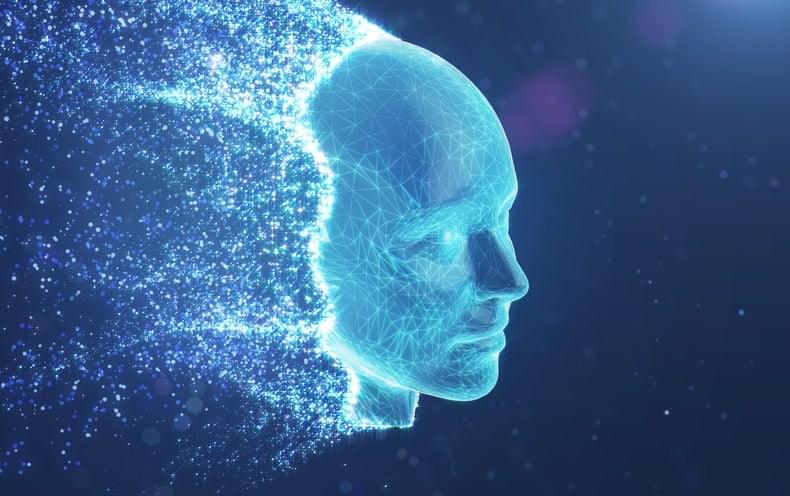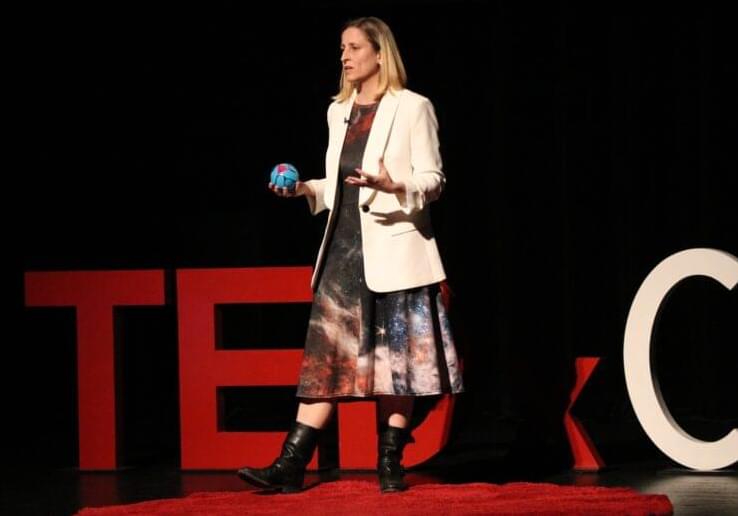Top universities are finally bringing the excitement of the quantum future into the classroom.



Dr. Emily Rice, an Associate Professor of Astrophysics at the Macaulay Honors College of CUNY and resident research associate in the Department of Astrophysics at the American Museum of Natural History (AMNH), is one of the keynote speakers at the TEDxCUNY conference to be hosted on March 10, 2023.
Dr. Rice is extremely involved in the scientific community through her role as a researcher and professor. Dr. Rice co-founded the research group Brown Dwarfs in New York City (BDNYC) with Dr. Kelle Cruz from CUNY Hunter College and Dr. Jackie Faherty from AMNH. Brown Dwarfs are objects that have masses between giant exoplanets and low mass stars. Dr. Rice explained there was a lot about Brown Dwarfs that scientists were yet to explore and understand.
“The three of us started this research group following a small project we had collaborated on,” Dr. Rice said. In 2010, Dr. Cruz had started their work with Hunter College, Dr. Rice was wrapping up her postdoctoral work, and Dr. Faherty was finishing up graduate school. “We all happened to be in New York City at the time, and we were all working with Brown Dwarfs, so we decided to create a research group focused on these substellar objects,” Dr. Rice remarked.
One Health Approaches To Prevent Zoonoses & Antimicrobial Resistance — Dr. Keith Sumption, Ph.D. — Chief Veterinary Officer and Leader of the Animal Health Program; Director, Joint Centre for Zoonoses and Anti-Microbial Resistance (CJWZ), Food and Agriculture Organization of the United Nations (FAO)
Dr. Keith Sumption, Ph.D. is Chief Veterinary Officer and Leader of the Animal Health Program at the Food and Agriculture Organization of the United Nations (FAO — https://www.fao.org/home/en) as well as their Director of the Joint Centre for Zoonoses and Anti-Microbial Resistance (CJWZ).
The Food and Agriculture Organization of the United Nations is an international organization that leads international efforts to defeat hunger and improve nutrition and food security. The FAO comprises 195 members and helps governments and development agencies coordinate their activities to improve and develop agriculture, forestry, fisheries, and land and water resources. It also conducts research, provides technical assistance to projects, operates educational and training programs, and collects agricultural output, production, and development data.
Dr. Sumption has worked on disease ecology at the interaction of wildlife, domestic and the environment for more than 30 years.
Dr. Sumption holds a Doctor of Philosophy (PhD) from the University of Reading, gained following 3 years of field and molecular epidemiology research upon African Swine Fever in southern Africa, and veterinary medicine (Vet. MB) and Natural Sciences degrees from the University of Cambridge in the United Kingdom.
https://youtube.com/watch?v=uYjjRAcI7x4&feature=share
For copyright contact: stienlemane2379(at)gmail.com.
Welcome to Futureunity, where we explore the fascinating world of science, technology, and the universe! From the inner workings of the human body to the outer reaches of space, we delve into the latest and most interesting discoveries that are shaping our world. Whether you’re a science buff or just looking for some mind-blowing facts, we’ve got you covered. Join us as we uncover the mysteries of the world around us and discover new frontiers in the fields of science and technology. Get ready for a journey that’s both educational and entertaining!
Disclaimer Fair Use:
1. The videos have no negative impact on the original works.
2. The videos we make are used for educational purposes.
3. The videos are transformative in nature.
4. We use only the audio component and tiny pieces of video footage, only if it’s necessary.
Copyright Disclaimer under section 107 of the Copyright Act 1976, allowance is made for “fair use” for purposes such as criticism, comment, news reporting, teaching, scholarship, education, and research. Fair use is a use permitted by copyright statutes that might otherwise be infringing.
Disclaimer:
Our channel is based on facts, rumors & fiction.
Head to https://linode.com/scishow to get a $100 60-day credit on a new Linode account. Linode offers simple, affordable, and accessible Linux cloud solutions and services.
Scientists like to measure things, but they’ve had a heck of a time doing that with sharpness. And even if no one agrees on exactly how to measure it, our search for better tools has recently led to some of the sharpest objects we’ve ever created.
Hosted by: Hank Green (he/him)
———
Support SciShow by becoming a patron on Patreon: https://www.patreon.com/scishow.
———
Huge thanks go to the following Patreon supporters for helping us keep SciShow free for everyone forever: Matt Curls, Alisa Sherbow, Dr. Melvin Sanicas, Harrison Mills, Adam Brainard, Chris Peters, charles george, Piya Shedden, Alex Hackman, Christopher R, Boucher, Jeffrey Mckishen, Ash, Silas Emrys, Eric Jensen, Kevin Bealer, Jason A Saslow, Tom Mosner, Tomás Lagos González, Jacob, Christoph Schwanke, Sam Lutfi, Bryan Cloer.
———
Looking for SciShow elsewhere on the internet?
SciShow Tangents Podcast: https://scishow-tangents.simplecast.com/
TikTok: https://www.tiktok.com/@scishow.
Twitter: http://www.twitter.com/scishow.
Instagram: http://instagram.com/thescishowFacebook: http://www.facebook.com/scishow.
#SciShow #science #education #learning #complexly.
———
Sources:
https://www.tf.uni-kiel.de/matwis/amat/iss/kap_c/backbone/rc_2_4.html.
https://onlinelibrary.wiley.com/doi/abs/10.1111/j.1524-4725.1982.tb01093.x.
https://www.proquest.com/openview/ecab7dfbc6c1cfec6fabf4d0f7…e=gscholar.
https://www.sciencedirect.com/science/article/pii/S0003687006000238
https://physics.aps.org/articles/v9/155
https://www.guinnessworldrecords.com/world-records/sharpest-object-man-made.
https://books.google.com/books?id=gDflDwAAQBAJ&pg=PA71&lpg=P…le&f=false.
https://pubmed.ncbi.nlm.nih.gov/12124714/
https://www.jstor.org/stable/44159720?read-now=1#page_scan_tab_contents.
https://www.ncbi.nlm.nih.gov/pmc/articles/PMC3380774/
https://www.sciencefocus.com/science/whats-the-sharpest-knife-in-the-world/
https://www.sciencedirect.com/science/article/pii/S0924013604007022
https://www.sciencedirect.com/science/article/pii/S0013794406004073
https://www.scientific.net/KEM.293-294.769
https://www.sciencedirect.com/science/article/pii/S0020740318322665
https://www.cambridge.org/core/journals/robotica/article/abs…7BAFBA8B6F
https://link.springer.com/content/pdf/10.1007/s10816-022…;0.pdf?pdf.
Images:
https://commons.wikimedia.org/wiki/File: Crater_knife_edge.jpg.
https://www.researchgate.net/figure/Artificial-sapphire-scal…_354874023
https://www.southampton.ac.uk/biu/galleries/sem.page.
https://commons.wikimedia.org/wiki/File: Obsidian_blade_mounted_in_ornamental_handle,_from_Admiralty_Wellcome_M0015133.jpg.
https://commons.wikimedia.org/wiki/File:Blade_MET_VS1994_35_468.jpeg.
https://commons.wikimedia.org/wiki/File:Macro_sewing_machine_needles.jpg.
https://commons.wikimedia.org/wiki/File:Beveled_tip_of_a_hyp…14_005.JPG
https://www.researchgate.net/figure/SEM-image-of-a-carbon-na…2_51450738
https://commons.wikimedia.org/wiki/File:Scanning_Tunneling_M…ematic.svg.
https://commons.wikimedia.org/wiki/File:%D0%9E%D0%B4%D0%BD%D…%D0%B0.jpg.
https://commons.wikimedia.org/wiki/File:Prehistoric_Denmark_…51010).jpg
Reliable carbon-free power for the world — michelle catts, senior vice president, nuclear programs, ge-hitachi nuclear energy.
Michelle Catts is the Senior Vice President of Nuclear Programs at GE-Hitachi (GEH — https://nuclear.gepower.com/) located in Wilmington, NC.
Ms. Catts has over 18 years of demonstrated managerial and technical expertise in nuclear Regulatory Affairs and currently is responsible for ensuring world-class Quality, Continuous Improvement, Regulatory Affairs, and oversight of Environment, Health & Safety programs. She manages a multimillion-dollar budget and over a 30-member organization. She provides licensing and quality leadership and guidance to support nuclear fuel facility licensing, current nuclear fleet fuel reload/outage licensing activities, new reactor and new fuel opportunities, Technical Regulations and Standards, and GE-Hitachis’s Vallecitos and Morris sites.
Prior to joining GE-Hitachi, Ms. Catts worked for the U.S. Nuclear Regulatory Commission (NRC) where she held positions of increasing responsibility including as a nuclear reactor inspector stationed onsite at nuclear power plants up to the Policy Advisor to the Presidential Appointed NRC Chairman.
Ms. Catts holds a B.S. in Nuclear Engineering from North Carolina State University and is currently working on her MBA at UNCW.

The sensor sends out its location as it moves through the GI tract, revealing where slowdowns in digestion may occur.
Engineers at MIT
MIT is an acronym for the Massachusetts Institute of Technology. It is a prestigious private research university in Cambridge, Massachusetts that was founded in 1861. It is organized into five Schools: architecture and planning; engineering; humanities, arts, and social sciences; management; and science. MIT’s impact includes many scientific breakthroughs and technological advances. Their stated goal is to make a better world through education, research, and innovation.
Are you ready to discover the potential technological developments that could shape the world we live in and get a glimpse of what life in the year 2100 might be like? As we approach the turn of the century, the world is expected to undergo significant changes and challenges. In this video, we will show you how the merging of humans and artificial intelligence can help solve any problem that comes our way and even predict the future.
Imagine being able to access the thoughts, memories, and emotions of billions of people through the hive mind concept. This will provide a unique way of experiencing other people’s lives and gaining new perspectives. Hyper-personalized virtual realities customized to fulfill every individual’s desire will be the norm. Users will enter a world where their every wish and fantasy constantly comes to life, maximizing their happiness, joy, and pleasure.
Education as we know it will change forever with the ability to download skills and knowledge directly into a person’s brain. People will be able to learn new skills and gain knowledge at unprecedented speeds, becoming experts in any field within seconds. The discovery and use of room-temperature superconductors will revolutionize many industries and transform the world’s infrastructure, especially in transportation. By 2100, this technology will be a reality and used in numerous industries.
Join us until the end of the video, where the final development will really raise your eyebrows. The future is exciting, and it’s happening now. Don’t miss out on this incredible journey!
As always, thanks for stopping by at Future Tech Enthusiast! Where we are truly enthusiastic about the Future of Technology!
Check out our website at: https://futuretechenthusiast.com/
This is a clip from Technocalyps, a documentary in three parts about the exponential growth of technology and trans-humanism, made by Hans Moravec. The documentary came out in 1998, and then a new version was made in 2006. This is how the film-makers themselves describe what the movie is about:
“The accelerating advances in genetics, brain research, artificial intelligence, bionics and nanotechnology seem to converge to one goal: to overcome human limits and create higher forms of intelligent life and to create transhuman life.”
You can see the whole documentary here: https://www.youtube.com/watch?v=fKvyXBPXSbk. Or, if you’re more righteous then I am, you can order the DVD on technocalyps.com.

The new systems will complement teachers not replace them.
Artificial intelligence (AI) robots could soon be teaching in UAE classrooms, according to a report by the country’s The National published on Saturday.
This is according to comments made by the nation’s minister of education at an education conference.